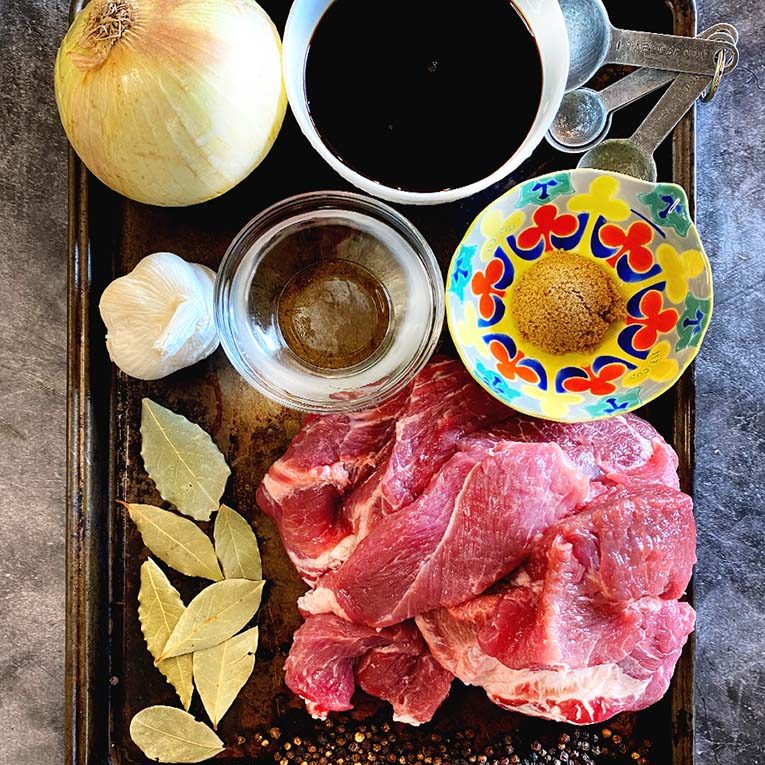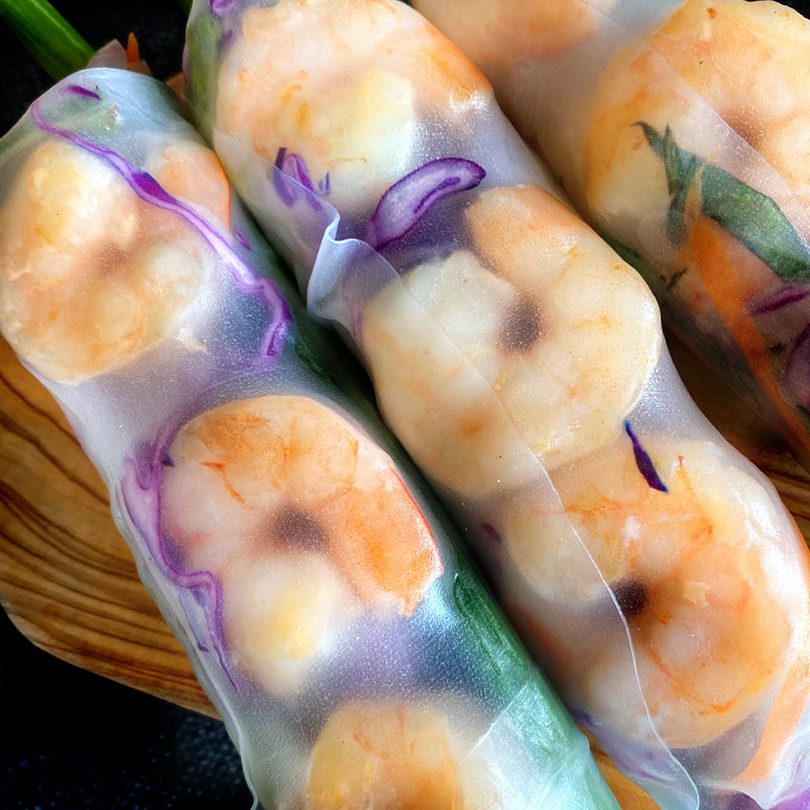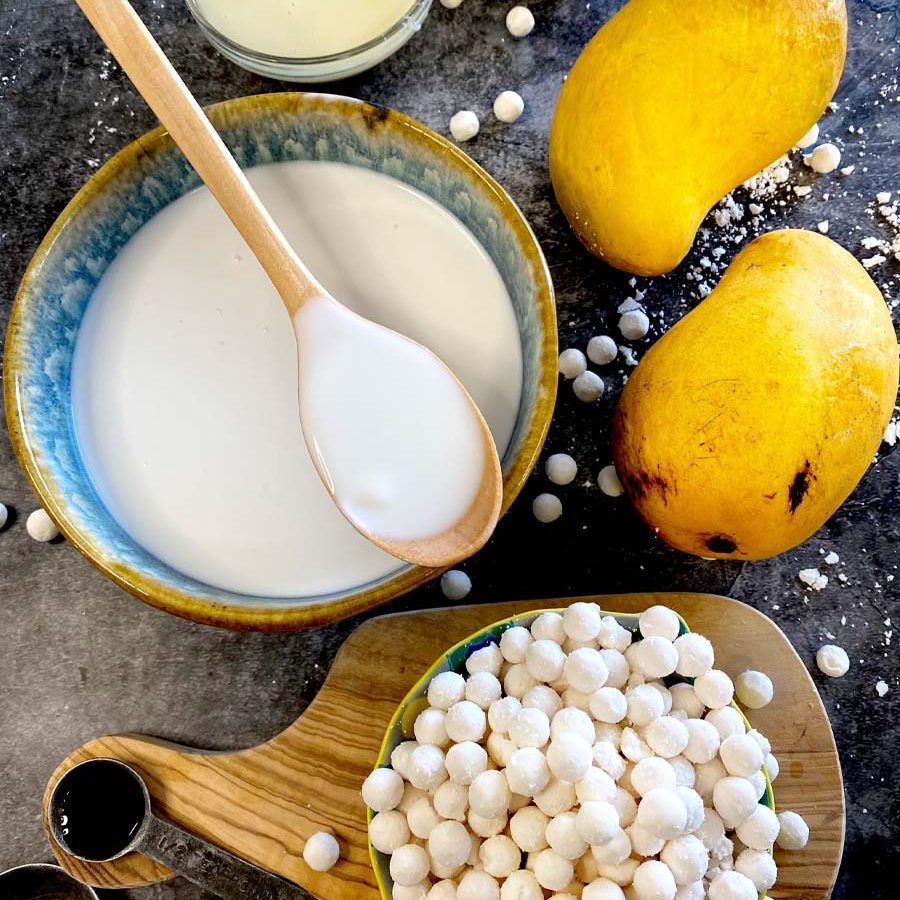Having a classic Pork Adobo Recipe is a must for any introductions to Filipino food. Lip-smacking pork shoulder is braised to fork-tenderness in soy sauce, vinegar, bay leaves, peppercorn, and balanced with brown sugar. It’s a one-pot ulam (food eaten with rice) that has depths of flavor, yet made so very simply. Someone gimme a side of rice.

Table of contents
Adobo is Forever
The Introduction to Filipino Adobo starts Early
I grew up eating chicken adobo and pork adobo very frequently. Now, I get to feed my kids adobo and they love it! Even the little little kid loves it. He devours it.
As a kid, I’m not sure if it was the vibrant flavors that got me, or the simplicity of spooning it with rice (my favorite side ever), but the intermingling of tender meat in a sauce that screams flavor-burst….I think it was the perfect kids meal.
Must to my astonishment when I pulled up at school-time lunch to unleash this most favorite and famous of Filipino “national” foods…I really noticed I was different.
While it may be true that my appearance may seem like I should have been eating p and j sandwiches, there was more than what meets the eye.
Adobo is a Dish that is Usually Passed down Generation after Generation
Nonetheless, I knew that adobo represented a part of ME. This food connected me to my roots, parts of how I was raised, and was much more than food could ever be.
I ate it proudly, and nothing tastes better than a bowl of warm nourishing food, good for the soul.
Accordingly, I really love that my kids enjoy adobo too!
The sauce, to this day, is at the top of my cravings. I can point out adobo aroma better than a bloodhound.
Unquestionably, it’s a taste, smell, and feeling that you will never erase from your mind and from your being of who you are…when you grow up eating adobo.
Now that I’m writing about this, I’ll be right back. Someone gimme a side of rice.

What is Adobo?
Filipino Adobo is so unique and recognizable, it’s considered the “unofficial” national dish of the Philippines. Not on paper, but everyone talks about adobo.
One thing that is amazing about Filipino cuisine is the actual amalgamation and intertwining of flavors, methods, and ingredients from Spanish, European, and Chinese influence. These mixtures have created something so different, what we now see as Filipino foods.
You’re not going to mistake this pork adobo recipe for Italian food and you’re not going to be confused when you taste pancit or lumpia. It’s not Chinese, Thai, or Spanish food to name a few examples.
Adobo is just simply, a one and only, Filipino food.

Brief History of Filipino Pork Adobo
The history of Filipino Pork Adobo dates back to the pre-colonial era in the Philippines. The dish is believed to have originated as a method of preserving meat in vinegar and salt.
The word “adobo” itself is derived from the Spanish word “adobar,” which means to marinate or preserve.
Before the arrival of the Spanish, the indigenous people of the Philippines had already developed their own method of preserving meat using vinegar and salt.
This method helped to extend the shelf life of meat in a tropical climate where fresh ingredients could spoil quickly.
Spanish Influences
With the Spanish colonization of the Philippines in the 16th century, the dish underwent further influences and modifications.
The Spanish introduced ingredients such as soy sauce, garlic, and bay leaves, which were incorporated into the traditional adobo recipe.
This fusion of flavors created the savory, tangy, and aromatic taste that is now characteristic of Filipino Adobo.
Today, Filipino Pork Adobo continues to be enjoyed and celebrated, by people from all parts of the world.
Its enduring popularity is a testament to the enduring legacy of Filipino culinary heritage.
Signature Elements of Filipino Adobo
Typically, Filipino adobo incorporates garlic, soy sauce, and vinegar. Consider this the foundation. Additionally, add bay leaves and black pepper…you can now “adobo” whatever you want!

PORK ADOBO INGREDIENTS
Since this recipe requires few ingredients, it’s the method in how the ingredients are integrated that brings out the best flavors.
Pork Shoulder
This cut has the best fat to lean ratio for tender bites and mildly rich sauce. Cook LOW and SLOW. Give it time and taste test.
Garlic
Be sure to crush or smash the garlic, or use a mincer. This releases all that fierce garlic super-power flavor and garlic oil. No Filipino adobo can be complete without lots of FRESH garlic.
Oil
sautéing garlic and onions
Onion
any color is fine
Bay Leaves
Mandatory for pulling together that adobo aroma and bright flavor.
Peppercorns
Traditionally, peppercorns are the way to go. When you think of biting into whole peppercorns, it may be a bit of spice gone “wild”, but even my husband craves those zingy peppercorns. As a substitute, you can use coarsely ground black pepper.
White Distilled Vinegar
A balanced dish requires a little salt, fat, sweet…and acid. This is a must-have to make Filipino adobo. It’s the lip-smacking, tongue-hugging ingredient.
Don’t use more vinegar than the soy sauce. The ratio should be only half of the soy sauce amount.
Soy Sauce
Regular or Low-Sodium. I use low sodium for this recipe and I will recommend you add or omit the sodium per your personal taste.
Brown Sugar
Not always in classic Filipino adobo, but pork goes very well with sauce that has a balanced sweetness. Think of pork with apples or pineapple…so a touch of sugar takes the sauce next level.

EQUIPMENT Needed
Filipino adobo is a one-pot recipe. You can even use a slow cooker.
Dutch Oven – works great by evenly distributing heat, has high side walls, and makes amazing soups, stews, and more.
HOW TO MAKE Pork Adobo
- Take your time with this one-pot meal, but good thing is that you can set it up and leave it be. The key is low and slow on the cooking.
- After an hour and a half (when using pork shoulder) you can check for fork tenderness and remove the lid to reduce the sauce. Put it on a simmer for 5 minutes and that sauce will have reduced and you’ll be left with a savory ulam sauce.
MARINATE THE PORK
- Cube the pork in thick chunks. Smash and mince the garlic.Combine in a glass bowl the pork, garlic, and soy sauce.
- Massage the meat with the sauce.
- Refrigerate 1-5 hours.
CREATE PORK ADOBO
- Remove the pork from the marinade. Set the marinade aside.
- Heat the Dutch Oven. Add oil.
- Sauté the onions until searing on the sides. Move the onions off to the side.
- Add the pork and layer as much as you can and do not move the pork. Let the pork sit and get a good sear. Then once the pork is nicely seared, turnover the pork.
- Add in the marinade of soy sauce and garlic. Get all that garlic in the pot.
- Add the vinegar and the water. Add the peppercorns and the bay leaves. Add the sugar. Gently mix the ingredients.
- CLOSE the lid. Simmer on LOW for one hour.
- Remove the lid and taste test. The pork should be very fork tender.Keep the lid removed, as soon as the pork is very nicely fork tender.
- Set the flame to high and reduce the sauce for 5 minutes. Remove from the heat. Rest the dish for a few minutes.

Focus on the Sauce
Don’t reduce the sauce for too long! Get saucy with it.
If you reduce it too much, it’s going to become a drier glaze and for me, doesn’t quite represent adobo’s beauty for being this sauce-driven and all in one dish of texture and flavor.
When growing up, I don’t think I ever ate adobo at any family or friends house where it didn’t have enough sauce to scoop over the meat and rice. The sauce being present and seen…it’s an important part of this recipe.
Don’t worry if the sauce doesn’t seem thick, it becomes a smooth consistency within a few minutes of rest time.
I eliminate cornstarch and depending how lean of meat you’re using, the sauce may be less or more viscose. More rich the meat, more viscose the sauce.
WHAT CUT OF MEAT FOR ADOBO?
The cut of meat you choose will determine the bite and sauce texture. This adobo recipe uses pork shoulder.
Pork Shoulder
Cook Low and Slow. Pork shoulder has an even balance of fat to lean ratio.
The sauce won’t be overly fatty. I recommend this cut and leaving a good amount of fat to supplement the leaner portion to enrich the sauce texture.
This cut of meat cut holds up well with a long and slow braising. Don’t overcook it, or else you’ll have pulled pork.
Pork Belly
Cook Low and Slow. This is the richest cut for pork adobo. Expect the bite for this dish to be soft, mostly fat, and extra rich.
Pork Tenderloin
Cook High and Fast.
As the name suggests, pork tenderloin is tender and lean. Prepare it differently if you choose this cut.
If you accidentally braise pork tenderloin for a long time, it’s going to be dry. So my foremost recommendation is to marinate the tenderloin for two hours in soy and garlic. Then bake the pork tenderloin quickly on high heat.
Make the sauce in the pan separately by sautéing the garlic and onions, adding peppercorns, and then the liquids. Add a touch of cornstarch. CUT the water ratio by a quarter. Simmer on high till slightly reduced. Set aside.
BAKE the pork tenderloin at 400 F in the oven 20-25 minutes. The internal temp for pork tenderloin should be 145 F. REST the tenderloin. Then slice and add it into the sauce. Serve immediately.
Do You Marinate Pork Adobo?
Marinating the pork in soy sauce adds extra tenderizing and flavor of the meat.
- cube the pork, leaving a generous ratio of fat to lean
- put it in the soy sauce and garlic
- refrigerate for anywhere from a half hour to four hours
Overall, give yourself some grace. When I don’t have time, I don’t marinate and it still turns out great.
TRY more STYLES of Filipino Adobo
- Tofu adobo aka adobong tokwa
- Mussels adobo aka Adobong Tahong
- CRISPY Adobo AIR FRYER Wings
- STICKY Adobo AIR FRYER Wings
- Pork Adobo with Coconut Milk is Amazing!
Notes & TIPS
- smash and mince the garlic
- marinate the pork in garlic and soy sauce to aid in tenderizing
- sear the pork before adding the liquids
- go low and go slow
- reduce the sauce on high and for 8 minutes
Add Ins and Variations that Go Really Well
- Yellow Sweet Potatoes (kamote) – My favorite add in by far. I love the meat to potato ratio and the mild sweetness from the potato.
- Fingerling Potatoes
- Mushrooms
- Ginger – freshly grated, added in the sauce
What to Serve with Filipino Pork Adobo
- Rice is the most authentic side for Filipino adobo
- Mustardy Greens like baby bok choy and Chinese broccoli
- Vegetable Pinakbet is my favorite dish with bitter gourd (ampayala) that especially compliments adobo made with pork belly.
Can I store leftovers?
Yes. Store leftovers in an airtight glass container. The meat is so delicious the next day, after having soaked up the sauce.
Reheat the adobo by adding a touch of water if needed and you can use the microwave or stove. Make adobo fried rice if you have leftover rice!
Is this healthy?
This can be a more indulgent meal because of the rich sauce. As well as, it’s almost impossible to not want to eat more than one helping of this.
I recommend adjusting to your preferences. Try using only half the meat or lean meat, add mushrooms, use low-sodium and gluten-free soy, and then two teaspoons of cornstarch to help thicken the sauce. This is a healthier, yet still delicious, alternative.
Is this Pork Adobo recipe gluten-free?
You can use gluten-free soy sauce and it will turn out awesome.
Do I have to marinate the pork?
No, it’s nice, but you don’t have to. Basically, when I’m in rush for dinner, I will whip this up and skip marinating.
Can I make Filipino adobo in a crock pot?
Yes! If you use a slow cooker, still follow the steps and recipe but do it all in the crock pot and just adjust your time to be longer, around 3 hours.

Filipino Classic Pork Adobo
Equipment
- Dutch Oven
Ingredients
- 1½ lbs pork shoulder cubes
- 3 tbsp oil
- 4-6 cloves garlic smash and mince; use as much garlic as you want
- ¾ large onion
- ¾ cup low sodium soy sauce
- ⅓ cup vinegar
- ½ cup water
- 2 tbsp brown sugar
- 6 bay leaves
- 1½ tbsp peppercorns
- salt and pepper to taste it usually doesn't need more salt, but it is to your preference
Instructions
Marinate the Pork
- Cube the pork in thick chunks. Smash and mince the garlic.Combine in a glass bowl the pork, garlic, and soy sauce.1½ lbs pork shoulder, 4-6 cloves garlic, ¾ cup low sodium soy sauce
- Massage the meat with the sauce.
- Refrigerate 1-5 hours.
Create Pork Adobo
- Remove the pork from the marinade. Set the marinade aside.
- Heat the Dutch Oven. Add oil.3 tbsp oil
- Sauté the onions until searing on the sides. Move the onions off to the side.¾ large onion
- Add the pork and layer as much as you can and do not move the pork. Let the pork sit and get a good sear. Then once the pork is nicely seared, turnover the pork.
- Add in the marinade of soy sauce and garlic. Get all that garlic in the pot.
- Add the vinegar and the water. Add the peppercorns and the bay leaves. Add the sugar. Gently mix the ingredients.⅓ cup vinegar, ½ cup water, 2 tbsp brown sugar, 6 bay leaves, 1½ tbsp peppercorns
- CLOSE the lid. Simmer on LOW for one hour.
- Remove the lid and taste test. The pork should be very fork tender. Keep the lid removed, as soon as the pork is very nicely fork tender.salt and pepper to taste
- Remove the pork into a serving bowl.
- Set the flame to high and reduce the sauce for 5-8 minutes. Remove from the heat. Pour the sauce mix all over the pork in the serving bowl.Rest the dish for a 3 minutes. Serve and Enjoy!
Notes
- serve with rice
- serve with steamed veggies
- garnish with Sichuan red pepper flakes or Thai chilis
- add mushrooms or yellow sweet potatoes









Leave a Reply